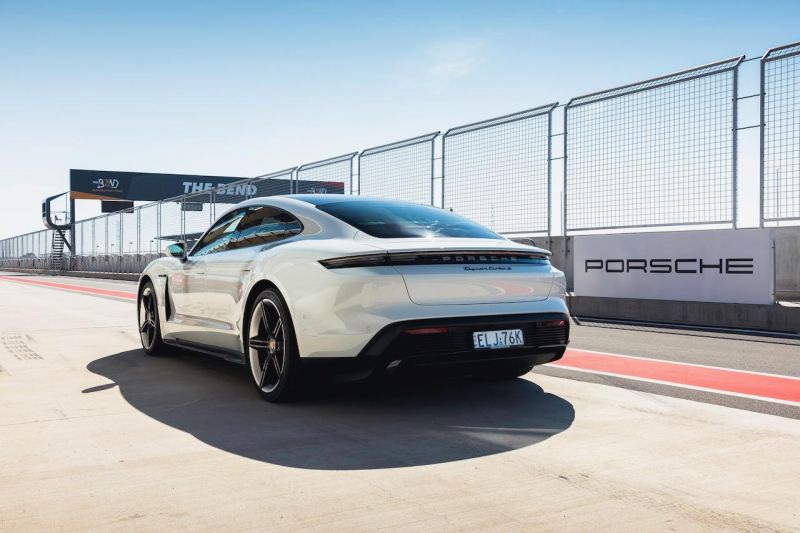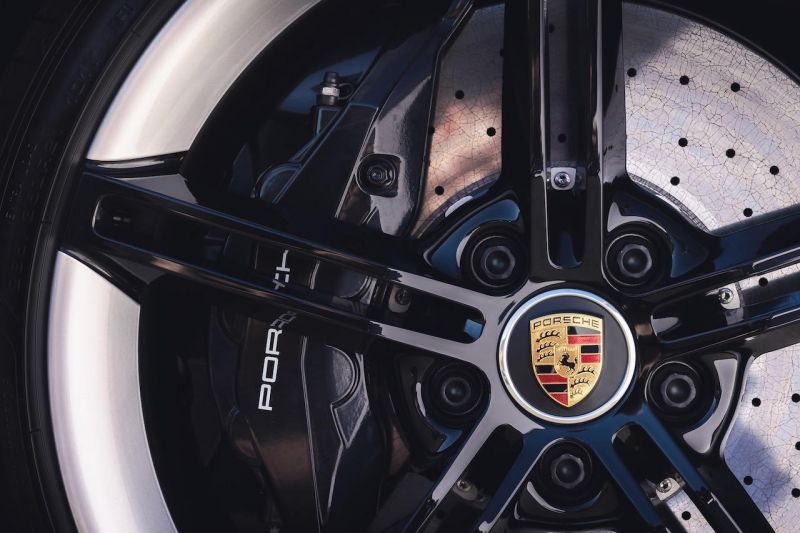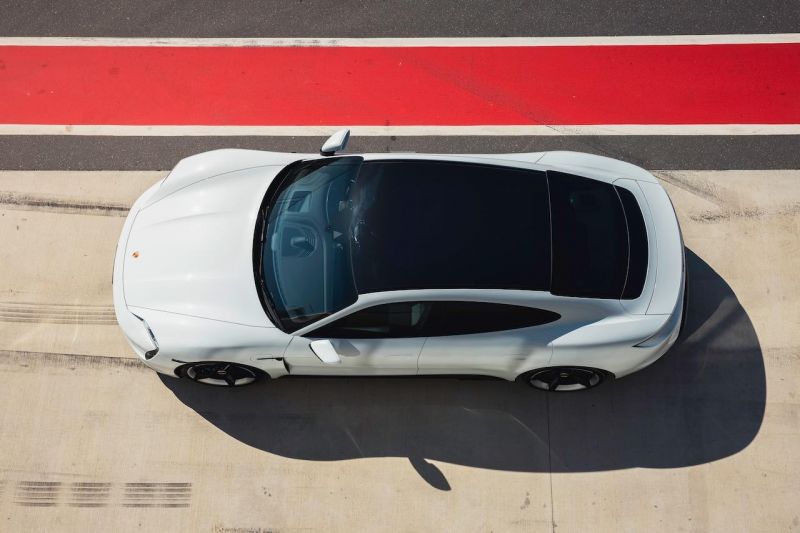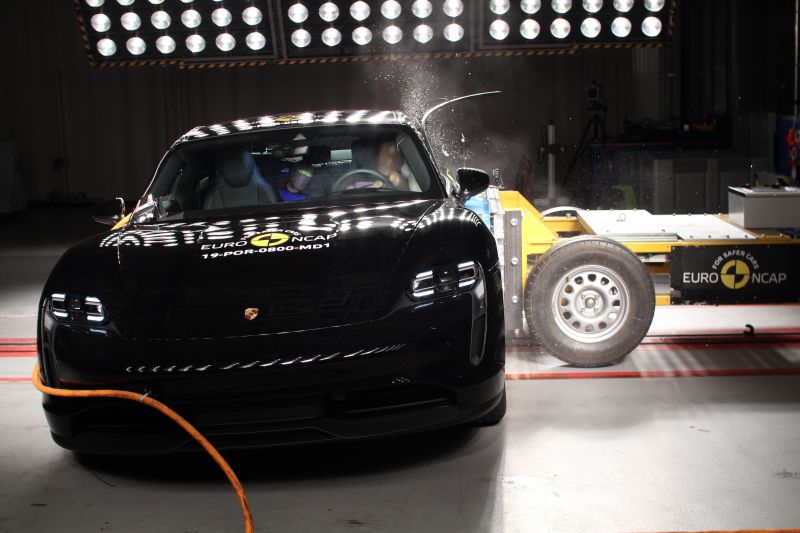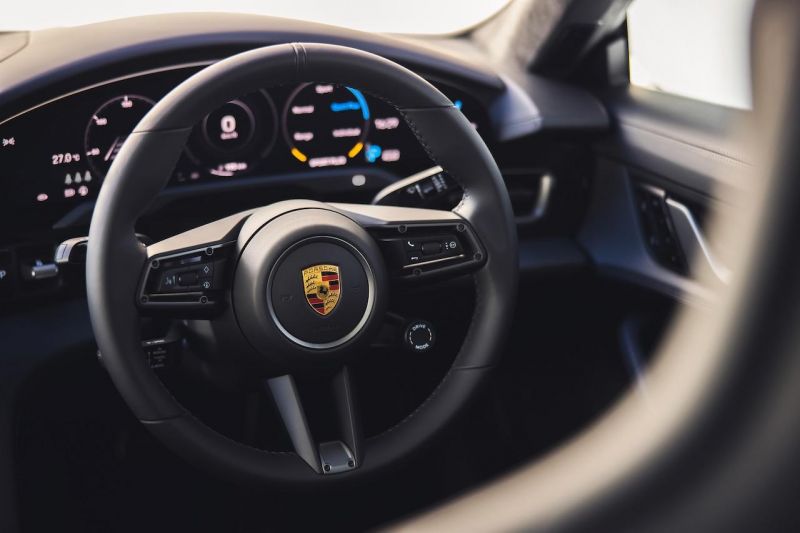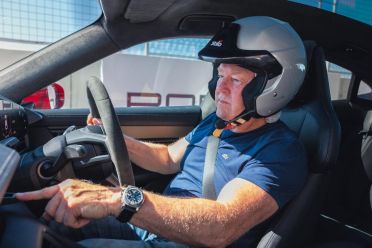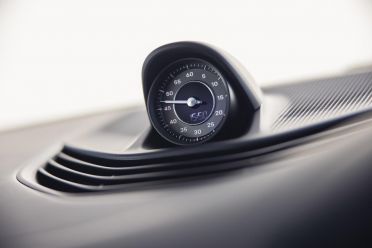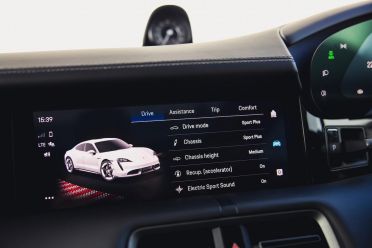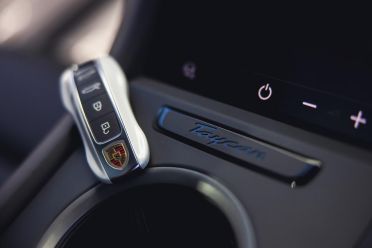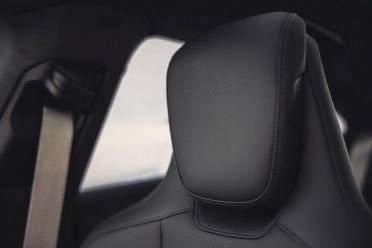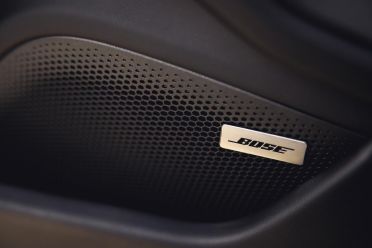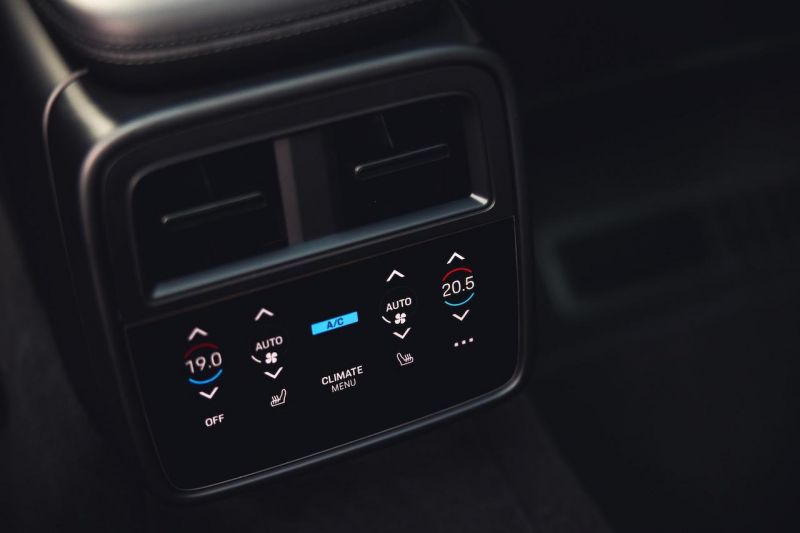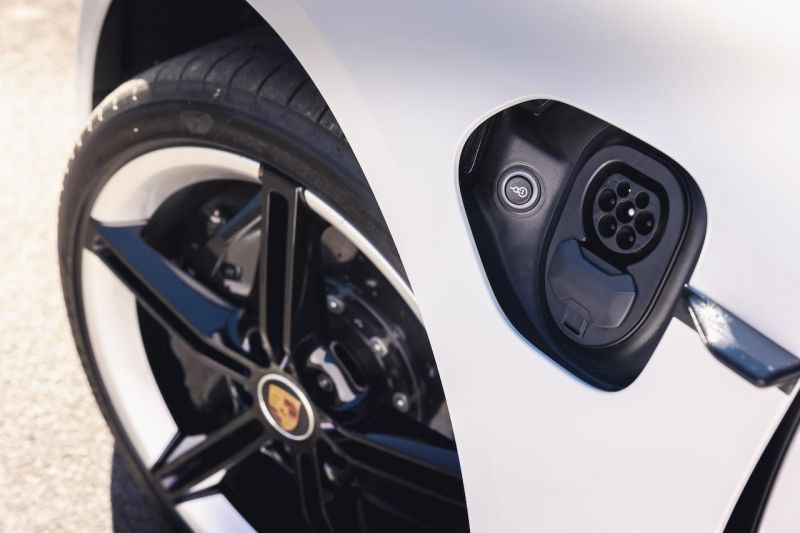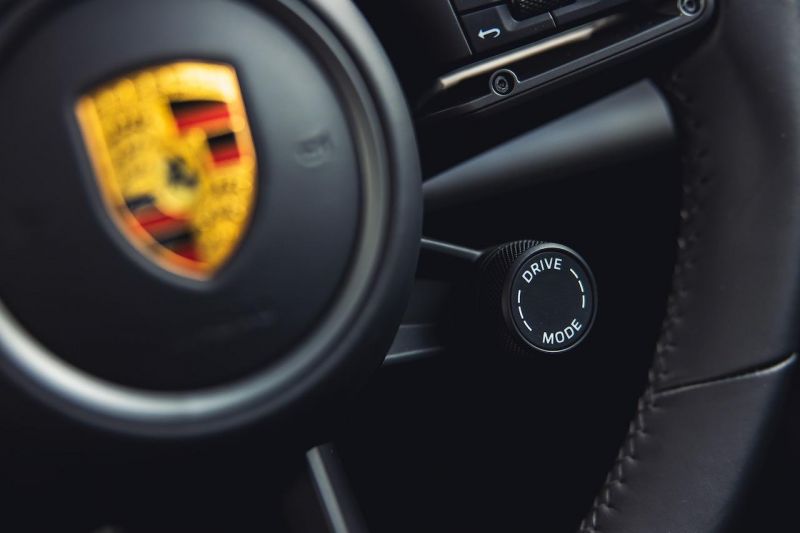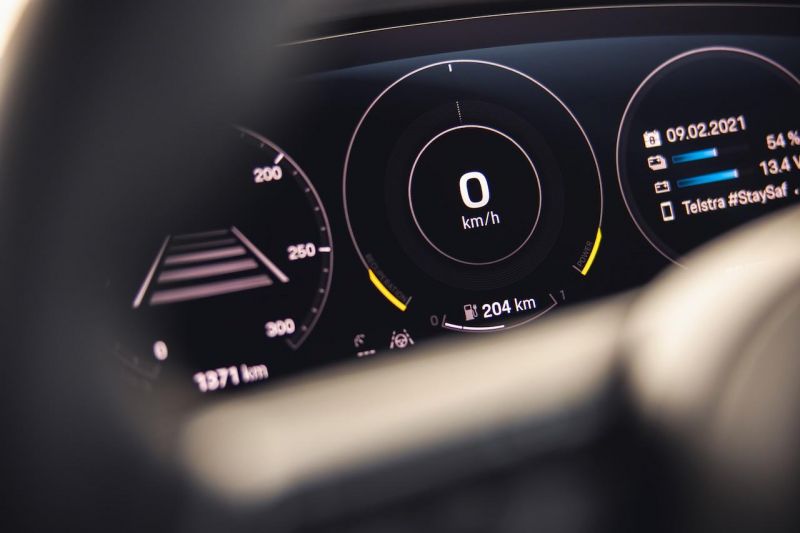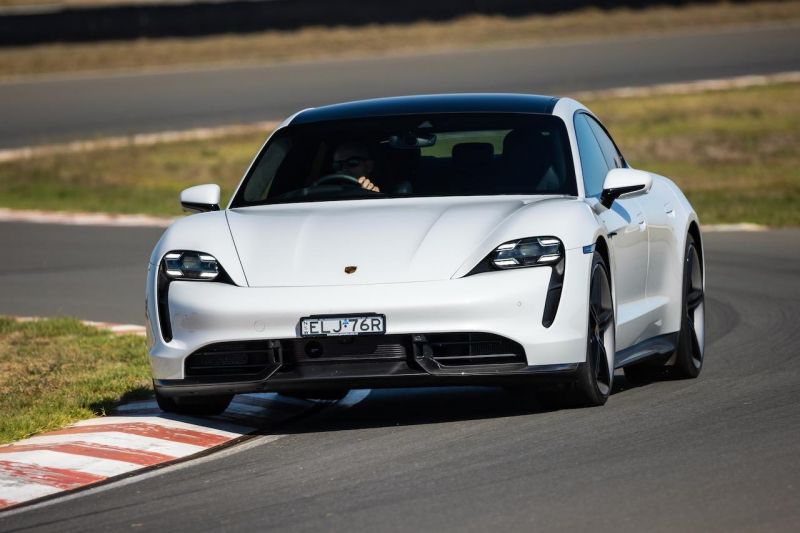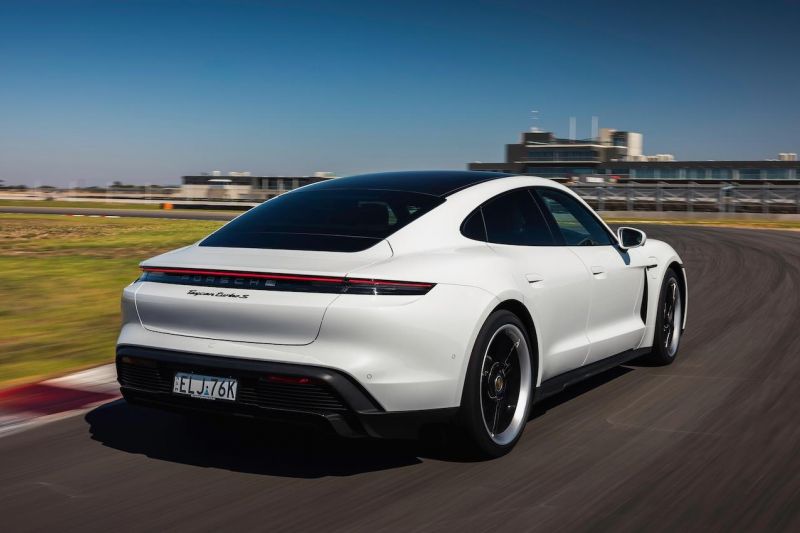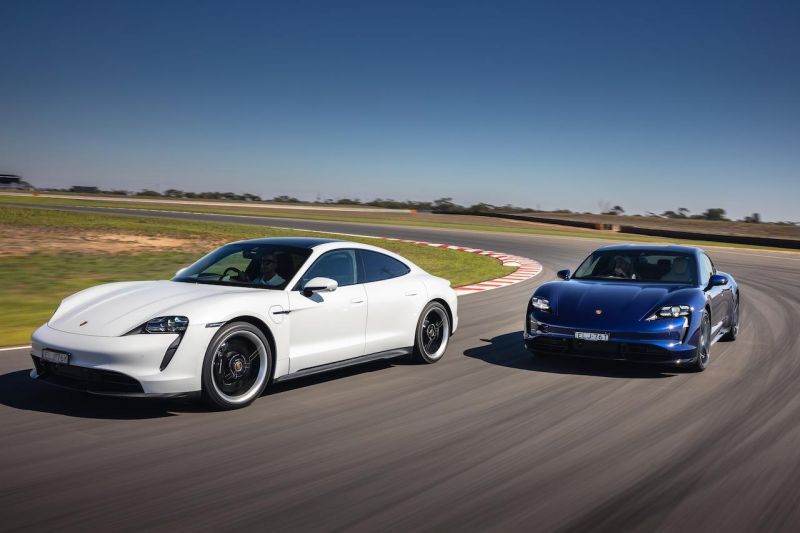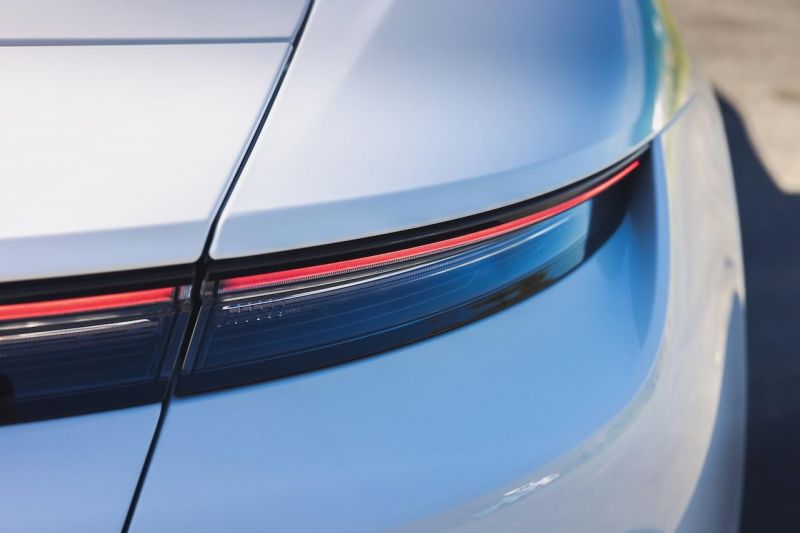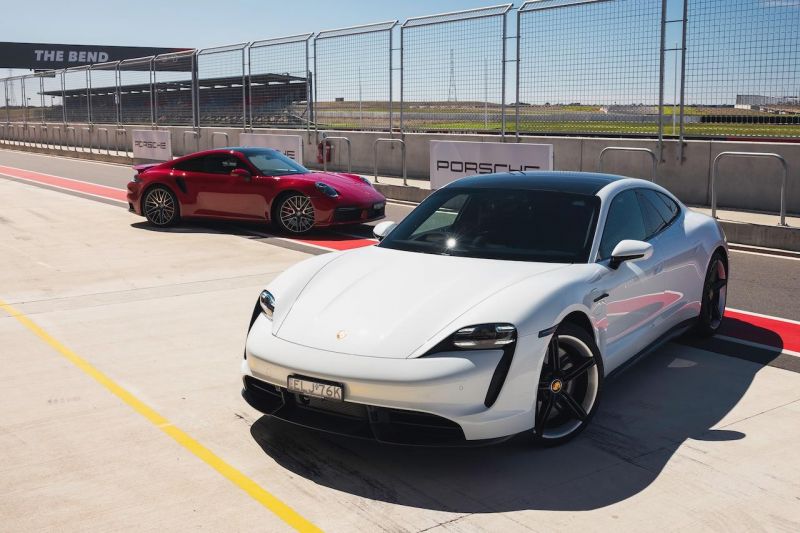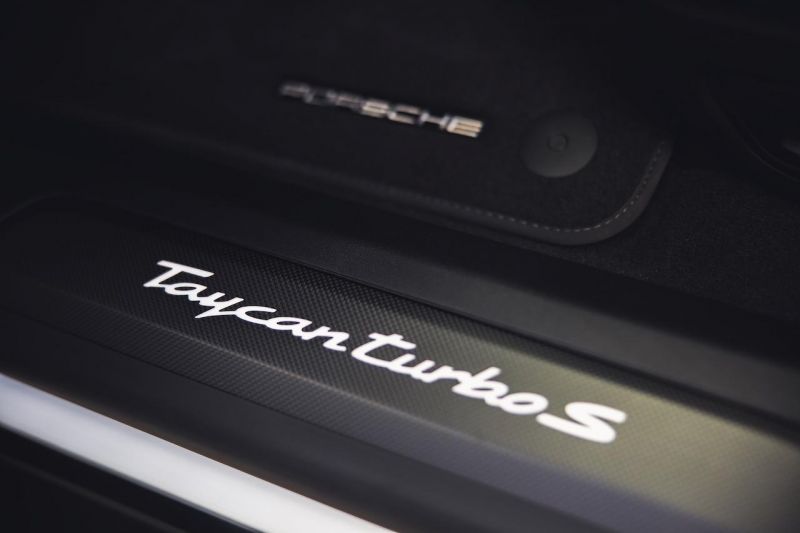Forget about every Porsche you’ve ever seen or driven, because the all-electric Porsche Taycan Turbo S is like no other that’s come before it.
It’s a blueprint for the future of high-performance motoring – but it’s here today. It’s unique not just because it’s Porsche’s first all-electric four-door, but because it feels like any other Porsche road car from behind the wheel.
That’s something we discovered at The Bend in South Australia, where we not only tested Porsche’s 0-100km/h claim for the Taycan Turbo S, but also got to push the all-new EV to its limits on track.
It is without question a technological tour de force, with promises of proper Porsche DNA in the driving experience.

How much does the Porsche Taycan Turbo S cost?
As the flagship model in Porsche’s electric charge (excuse the pun), the Taycan Turbo S is priced from a lofty $338,500 before on-road costs – a $148,100 premium over its entry-level Taycan 4S sibling ($190,400) and $70,000 more than the mid-spec Taycan Turbo ($268,500).
Mind, that’s still less than the equivalent 911 Turbo S ($481,700) or the latest 911 GT3 ($369,700).
Tesla has the mega-quick Model S Performance, priced from just $152,675 with a claim of 2.5 seconds for the 100km/h sprint and a range of 674km.
What do you get?
The list of equipment and standard features for Taycan Turbo S extends more than three pages, but even the entry 4S variant is loaded with an extensive array of tasty kit.
Both the Turbo S and Turbo get the Performance battery plus with a 93.4kWh capacity ($11,590 on the 4S), while the Turbo S adds Porsche electric sport sound, the Sport Chrono package including sports steering wheel, and 21-inch Mission E Design wheels with full-colour Porsche crest wheel centres.
Additionally, the Turbo S gets a host of extra carbon and high-gloss black bits such as carbon inlays for the front splitter, rear diffuser, and door sills and darkened window surrounds.
The Turbo S gets a more powerful braking system, wearing massive ceramic composite 420mm rotors with 10-piston calipers up front, and 410mm down back using four-pot calipers.
There’s adaptive air suspension including active suspension management (PASM) and a smart lift function which automatically lifts at programmable locations or drops for highway efficiency, but that’s shared across the Taycan range.
More standard kit includes rain-sensing wipers, thermally insulated glass, proximity key access, tyre pressure monitor, flush auto-deploying door handles, LED matrix headlights with Porsche Dynamic Light System Plus, and electrically-operated charge point covers for the driver’s and passenger side.
Inside, the Turbo S picks up four-zone climate control with a 5.9-inch high-resolution screen in the rear. It also gets a heated steering wheel, front seat heating and cooling, parking pre-climate, adaptive sports seats with 18-way electric adjustment with Turbo S logos, ambient lighting, and auto-dimming mirrors inside and out.
There’s also an electrically-powered tailgate, 360-degree camera, a choice of two-tone leather-free upholstery or smooth-finish full-leather, a ‘Race-Tec’ micro-fibre headliner, stainless-steel sports pedals as well as ‘Darksilver’ and ‘Carbon Matt’ trim.
It’s an all-digital affair in the Taycan with a huge 16.8-inch fully-digital driver’s curved instrument display that goes some way to mirroring Porsche’s trademark round binnacles combined with a series of haptic touch buttons flanking either side.
The 10.9-inch central infotainment screen incorporates navigation, Apple CarPlay, digital radio and climate control. These functions can also be controlled by voice control using the command, “Hey Porsche”. Standard audio across the entire Taycan range is a 750-watt, 14-speaker Bose surround sound system.
Additionally, all Taycans come with charging cables for domestic sockets, red industrial 400V outlets and public AC facilities with 4.5 metre length.
Is the Porsche Taycan S safe?
Taycan was tested in 2019 by Euro NCAP and was awarded a five-star safety rating after scoring 85 per cent for adult occupant protection, 70 per cent for cyclists/pedestrians and 73 per cent for safety assist. However, this rating hasn’t been carried over to ANCAP as yet.
Standard safety features include dual front, side and curtain airbags covering both seat rows, knee airbags for the driver and front passenger, rollover detection for activation of airbags, and an active bonnet.
Active safety is more substantial in the Taycan than the 911 range, with a suite of systems including lane-change assist (blind-spot monitoring), lane-keeping aid, and adaptive cruise control.
What is the Porsche Taycan Turbo S like on the inside?
While Porsche has billed the Taycan as an electric vehicle with genuine Porsche feel from behind the wheel, the cockpit is decidedly electric in every respect and devoid of a single button or switch, save for those dual scrollers on the steering wheel.
That said, the standard-fit Sport Chrono clock is still largely analogue with moving hands, but that’s about the extent of it.
The fully-digital driver’s instrument display is enormous and configurable in a multitude of ways, but with convenient short-cut touch-sensitive buttons placed either side.
Hop into the Taycan for the first time and you’ll very likely struggle to find the shift lever, because it’s tucked neatly away behind the right side of the steering wheel, and it’s even smaller than the one in the 911.
There isn’t a single button or toggle switch to be seen in this cockpit. Just one or two might be nice – perhaps a volume button or even a manual option to be able to control the direction of the air vents, because even that function is managed through large touchpad on the centre console.
The front passenger has a navigation screen in front of them, which makes perfect sense to me, while the infotainment display to the right is best left to Apple CarPlay.
The sports seats up front are wider and more sumptuous than those in a 911, and as such are extremely comfortable and supportive when going hell for leather on track.
At a smidge under five metres long the Taycan is a big unit, but rear-seat leg- and headroom could only be described as adequate – less so for taller frames. Even though the Taycan benefits from both a frunk and boot, its combined luggage capacity amounts to just 450 litres – not much more than a Kia Seltos (433L).
For those folks, or Porsche EV fans with a penchant for the great outdoors, there’s the eminently more practical Taycan Cross Turismo heading down under with a luggage capacity of 530L with the rear seats in position, or 1296 litres when folded.
What’s under the bonnet?
Just storage space, because that’s the frunk, where the internal combustion engine would normally sit.
The numbers, alone, are just mental, especially when you consider its classification as a four-door sports sedan with four seats and room for luggage.
It can generate up to 560kW of power and 1050Nm of torque, and jet from 0-100km/h in a claimed 2.8 seconds.
Zero to 200 takes just 9.8 seconds, the same acceleration figures as the monster-powered 911 GT2 RS. That’s despite the flagship Taycan tipping the scales at a heavyweight 2.3 tonnes. Top speed of both all-wheel drive Taycans is 260km/h.
While those performance claims might seem physics defying on their very own, the Porsche EV also has a range of between 388 and 412km (450kms for the Taycan Turbo). That’s still substantially less than the 647km claim for Tesla’s Model S Performance.
In just over five minutes the Taycan’s battery can be recharged using direct current from the high-power charging network for a range of up to 100km (according to WLTP).
The Taycan is also the first series-production vehicle in the world with an 800-volt charging system instead of the usual 400V used by most EVs on sale today, and has a maximum peak charging power of 270kW with overall capacity of the Performance Battery Plus quoted at 93.4kWh.
Moreover, the charging time for between five to 80 per cent state of charge is down to 22.5 minutes using the same high-power charging network, though the Taycan can also be charged at home with up to 11kW of alternative current overnight.
Alternatively, using the DC charge port at 50kW will take 93 minutes, while charging at home using AC power at 11kW will be an overnight affair
Taycan uses permanent magnet synchronous motors with a maximum motor speed of 16,000rpm for the front and rear axles, developed in-house by Porsche, with a combined weight of 246 kilograms.
The front axle power unit in the Turbo S generates a maximum power output of 190kW and 400Nm of torque, while the rear makes 335kW and 550Nm through a two-speed transmission and an electronically-controlled limited-slip differential that weighs just 17kg.
It has a two-speed transmission developed by Porsche for maximum acceleration, as well as efficiency, along with two electric motors, one for each axle for all-wheel drive. The drive modules also have the highest power density of all electric powertrains on the market today.
There’s an integrated chassis system that synchronises all systems (and there’s plenty of those) in real-time. That’s adaptive three-chamber air suspension with electronic dampers, electromechanical roll stabilisation, and torque vectoring plus.
How does the Porsche Taycan Turbo S drive?
Porsche is well-known for understating its performance figures and the range-topping Taycan Turbo S proved an ideal example of this ongoing practice.
The recipe is simple. Line up on the main straightaway at The Bend, put your foot hard on the brake pedal, engage drive, twist the drive mode selector dial to Sports Plus, and floor the throttle while releasing the brake.
The result? The Turbo S smashed the 2.8 second 0-100km/h claim by a staggering 0.338 seconds.
Moreover, it did it time and time again with multiple drivers over more than 15 runs, only shedding seven per cent of the available charge. That’s a staggering feat in itself and the perfect entrée into a full-blown track test in the Taycan Turbo S.
Not hearing an engine spinning in anger on a race circuit is peculiar in itself, totally foreign for most of us. But climb aboard and lower yourself into the Taycan’s superbly positioned sports seat and it feels entirely familiar for anyone used to a 911.
It’s amazing how quickly you get used to the small dash-mounted shifter. It’s more a horizontally-mounted toggle switch, but it feels right for the Taycan. A gentle push downwards and you’ve engaged drive; a couple of clicks to the right on the drive mode selector and we’ve got Sport Plus engaged for the full track attack experience.
The pace is both instantaneous and furious as you floor it out of pit lane, given the 460kW on tap and wait time for the usual turbos to spool up. Better still, throttle feel and power delivery feels perfectly linear.
I can’t say I’m aware of the two-speed transmission because it’s entirely seamless, but the initial punch is stupendous and it got me smiling a lot.
Turn-in is confident, sharp even, and the Taycan seems to rotate like a genuine Porsche sports car, albeit a 2300kg one. There’s plenty of grip all round, a combination of the car’s rear-biased all-wheel drive system, rear axle steering and Porsche’s magic-like ‘Dynamic Chassis Control’.
Much of the technical talk and how it all works together from an engineering standpoint are beyond my pay grade, but the all-wheel drive and traction control systems operate five times faster than conventional systems, so it all appears seamless to me on track.
If you miss any of the late apexes at The bend, you’ll very quickly feel the effects of the Taycan’s significant bulk with the usual understeer, but recovery is quick and then you’re back into it – catching the 911 in front.
The chassis set-up feels beautifully balanced, likely due to the fact in Sport Plus it permanently sits in its lowest position, which is 22mm down on the standard ride height.
Even so, there’s a fair bit of tyre squeal on track, but it doesn’t seem to affect the overall handling. More surprising still is the fact there’s little or no body roll felt from behind the wheel.
The Taycan uses Porsche’s active roll-stabilisation system with electromechanical anti-roll bars and it’s quite simply magic how this car stays so composed when pushed to its limits.
Steering weight is near perfect. Compared with the 911 Turbo (driven earlier the same day) it’s a tad numb, but it never feels like its fighting you – dead easy, in fact.
How much does the Porsche Taycan Turbo S cost to run?
Porsche covers the Taycan with a three-year, unlimited-kilometre warranty, and eight years/160,000km for the battery. Service intervals are up to 24 months and there’s no capped-price service plans available.
Taycan owners receive a complimentary three-year subscription to the Chargefox Ultra-Rapid DC charging network, which uses up to 350kW, as well as free charging at the selected Chargefox-managed Fast DC charging sites, which mostly use 50kW.
Porsche will also assess your home charging requirements as part of its partnership with JET Charge.
Additionally, owners also get the Home Energy Manager, which optimises the charging process in terms of performance, time and costs. It effectively monitors the power requirements of the car and available output of the energy supply.
CarExpert’s take on the Porsche Taycan Turbo S
The Taycan is a remarkable first effort. The fact that we’re here at a challenging track like The Bend, pushing this 2300kg EV to the very edge of its performance parameters and enjoying every moment of it, is nothing short of extraordinary.
For sure, the Taycan is expensive, but I’d argue it’s also the most complex and sophisticated Porsche road car ever built. It’s also exactly what you might expect of an all-electric sports car from this celebrated German carmaker.
It could be the best daily ever.
Click the images for the full gallery






